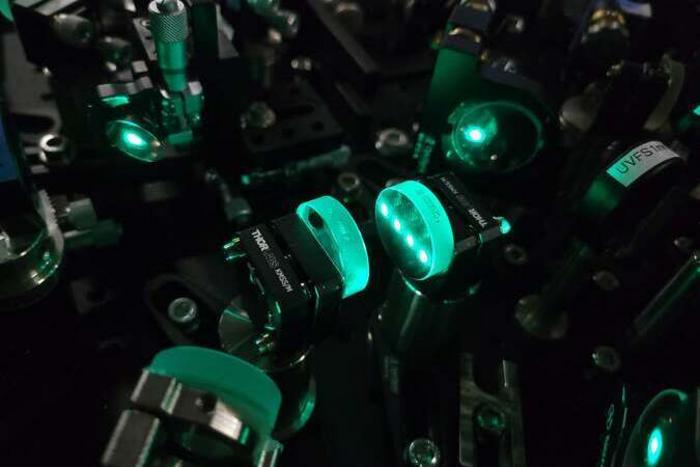University of Tokyo scientists have achieved a remarkable advancement in molecular identification technology, accelerating the measurement rate of Raman spectroscopy to speeds 100 times faster than previous methods. This breakthrough promises to transform how scientists observe and analyze rapid chemical reactions and biological processes.
Summary: University of Tokyo researchers have dramatically improved the speed of Raman spectroscopy, a crucial technique for identifying molecules, increasing measurement rates by 100-fold. This advancement could revolutionize fields from medical diagnostics to materials science.
Estimated reading time: 7 minutes
Understanding the Innovation
“Measurement is the foundation of science,” says Takuro Ideguchi, the principal investigator of the study, “and as such, we strive to achieve the highest performance in our measurement systems. Particularly, we are dedicated to pushing the boundaries of optical measurements.”
The technique, known as Raman spectroscopy, works by measuring how light scatters when it hits molecules. This scattering creates a unique “vibrational fingerprint” that helps scientists identify specific molecules. Until now, the speed of these measurements has been a significant limitation.
Breaking the Speed Barrier
The research team, led by Takuma Nakamura, Kazuki Hashimoto, and Takuro Ideguchi at the Institute for Photon Science and Technology, combined three key technologies:
- Coherent Raman spectroscopy
- A specially designed ultrashort pulse laser
- Time-stretch technology using optical fibers
The result? A system capable of 50 million spectra per second (50MSpectra/s), compared to the previous record of 50,000 spectra per second (50kSpectra/s).
The path to this achievement wasn’t easy. “I had been contemplating this idea for over ten years without being able to start the project,” says Ideguchi. “It was the new, optimal laser system we developed a few years ago that finally made progress possible.”
Future Applications and Impact
The implications of this advancement stretch across multiple scientific fields. Ideguchi describes the potential: “We aim to apply our spectrometer to microscopy, enabling the capture of 2D or 3D images with Raman scattering spectra. Additionally, we envision its use in flow cytometry by combining this technology with microfluidics. These systems will enable high-throughput, label-free chemical imaging and spectroscopy of biomolecules in cells or tissues.”
Key applications include:
- Biomedical diagnostics
- Material analytics
- Real-time chemical reaction monitoring
- Cell analysis and identification
- Tissue imaging
Glossary of Terms
- Raman Spectroscopy: A technique that identifies molecules by measuring how they scatter light
- Coherent Raman Spectroscopy: An advanced version producing stronger signals than conventional methods
- Spectra: Patterns of scattered light that reveal molecular properties
- Microfluidics: Technology that precisely controls tiny amounts of fluids
- Flow Cytometry: A method for analyzing and sorting cells
- Label-free: Analysis without adding chemical markers to samples
Quick Quiz
- How much faster is the new measurement system compared to previous methods?
- What three key technologies did the researchers combine to achieve this breakthrough?
- What is the new measurement rate achieved by the system?
Answers:
- 100 times faster
- Coherent Raman spectroscopy, specially designed ultrashort pulse laser, and time-stretch technology
- 50 million spectra per second (50MSpectra/s)
For more information: https://doi.org/10.34133/ultrafastscience.0076
Enjoy this story? Get our newsletter! https://scienceblog.substack.com/
If our reporting has informed or inspired you, please consider making a donation. Every contribution, no matter the size, empowers us to continue delivering accurate, engaging, and trustworthy science and medical news. Independent journalism requires time, effort, and resources—your support ensures we can keep uncovering the stories that matter most to you.
Join us in making knowledge accessible and impactful. Thank you for standing with us!

